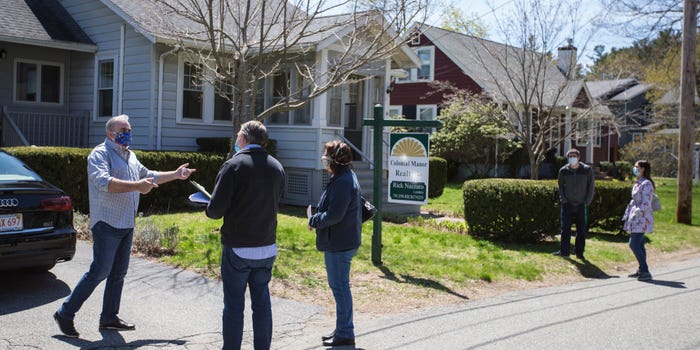Housing developers are encouraged to buy multifamily real estate held by the FDIC thanks to the Affordable Housing Program (AHP). In exchange for AHP properties sold at prices lower than their fair market value, owners must make their properties available to low-income households at affordable rentals for such families.

A seller's value on a piece of real estate only sometimes corresponds to the value buyers are ready to pay for that piece of real estate on the open market. Mortgages and other house loans become more expensive with rising property values. Bigger loans entail more outstanding mortgage payments for potential property buyers, which implies owners might have to charge higher rentals to compensate. Renters with lesser earnings are priced out of the market as values continue to rise. This means that these renters are unable to afford rent increases.
The Federal Deposit Insurance Corporation (FDIC) created the Affordable Housing Program (AHP) to assist low-income households in selling single-family homes and multifamily properties. Housing developers are encouraged to acquire multifamily buildings held by the FDIC under the AHP program, which is part of the Affordable Housing Partnership.
To put it another way, the actual market value of a property is lower than the assessed value since it considers the lower rent that are charged for sure the units. Other factors to consider include the current state of the building, the anticipated costs of maintaining it, and the available financing options.
How Exactly Does The Affordable Market Value System Perform?
The Federal Deposit Insurance Corporation (FDIC) was designed to address the housing needs of communities, particularly those of families with modest incomes. Low-income families or homebuyers can access inexpensive houses via the Federal Deposit Insurance Corporation's (FDIC) Affordable Housing Program. For determining the Affordable Market Value (AMV) for housing units, the Federal Deposit Insurance Corporation (FDIC) considers the lower income buying requirement. This helps determine the value at which housing units are sold. The AMV of a property is not the same as its appraised value; in most cases, the AMV is lower. In most cases, the FDIC will assign a value to the property known as the Actual Market Value (AMV), which differs from the property's market value (what buyers are willing to pay). Limited families who purchase properties through the FDIC's Affordable Housing Program are required to sign an agreement stating that they will rent out individual units of the multi-faceted apartment to individuals and households with low incomes at rents that are affordable to those individuals and families.
Taking Into Account Particulars
The program has four primary conditions that properties must fulfill to be eligible. These standards are designed to ensure that suitable property provides affordable housing to renters who cannot pay the going market rate for rental units. It is important to note that the Section 8 program, overseen by the United States Department of Housing and Urban Development (HUD), establishes the parameters for household income. HUD is also responsible for issuing the income eligibility limits as well as guidelines that AHP utilizes:

Owners of multifamily rental units bought under the AHP program must meet all four of the program's occupancy standards before moving in. The property owner is responsible for reserving a predetermined number of rental units for those with fewer financial resources. To comply with the program's requirements, at least one-third of the total amount of housing must be set aside for low-income families.
Rent Restrictions: Property owners participating in the program must keep the monthly rent for low-income tenants affordable. The program places restrictions on the highest possible amount of rent that may be collected by basing those restrictions on the regional median income. These restrictions apply to the maximum amount of rent that can be managed.
Resale Requirements: Even if the owner sells the property, the occupancy requirements, which establish the minimum amount of housing that needs to be provided to low-income families, as well as the rental limits, need to remain in effect. This is because the occupancy requirements set the minimum number of units for low-income families. In other words, the new buyer is responsible for meeting all of the standards set forth by the program.
Property owners must remain in compliance with the AHP program's affordability standards throughout the useful life of their properties during the compliance period.




